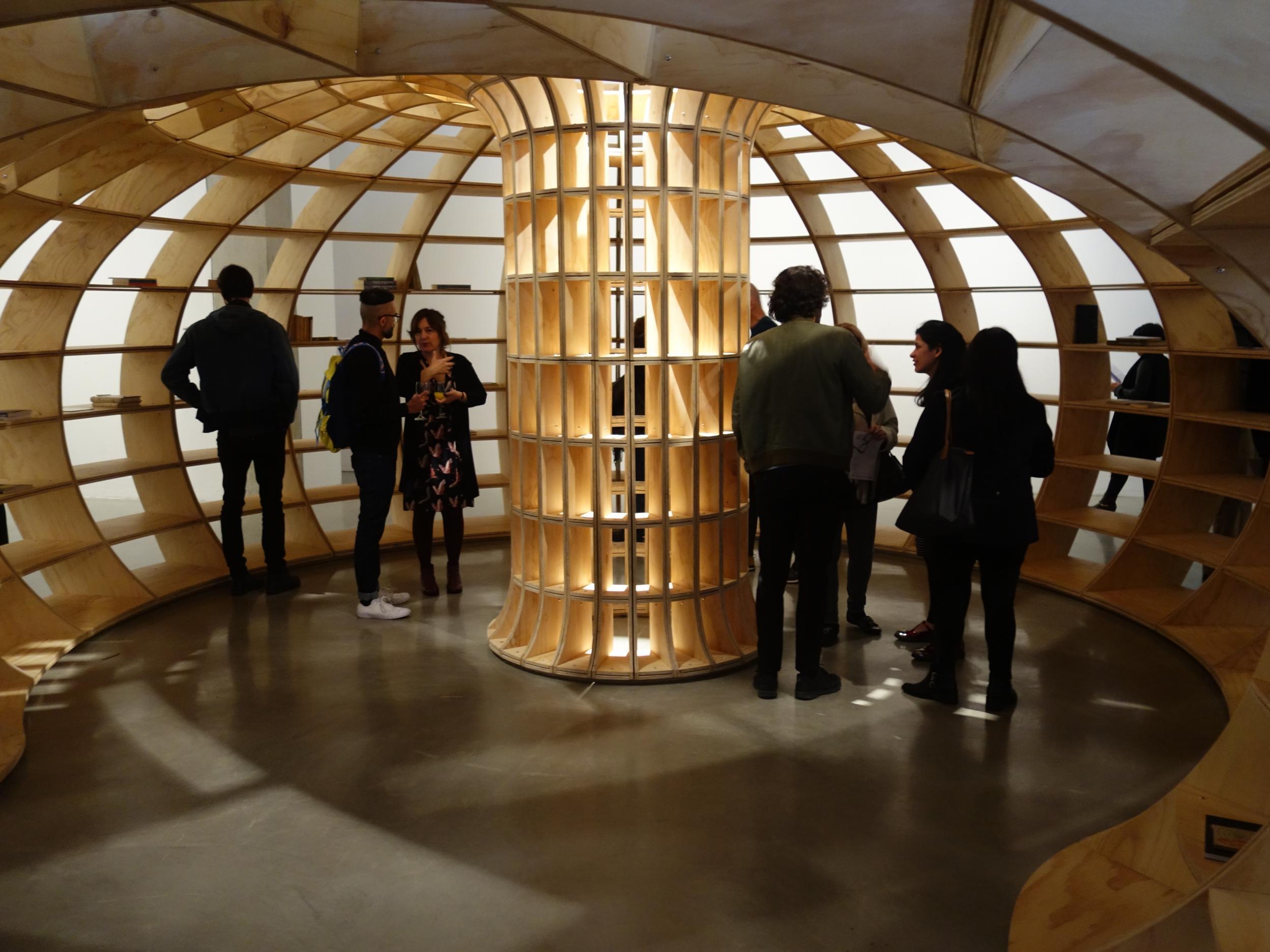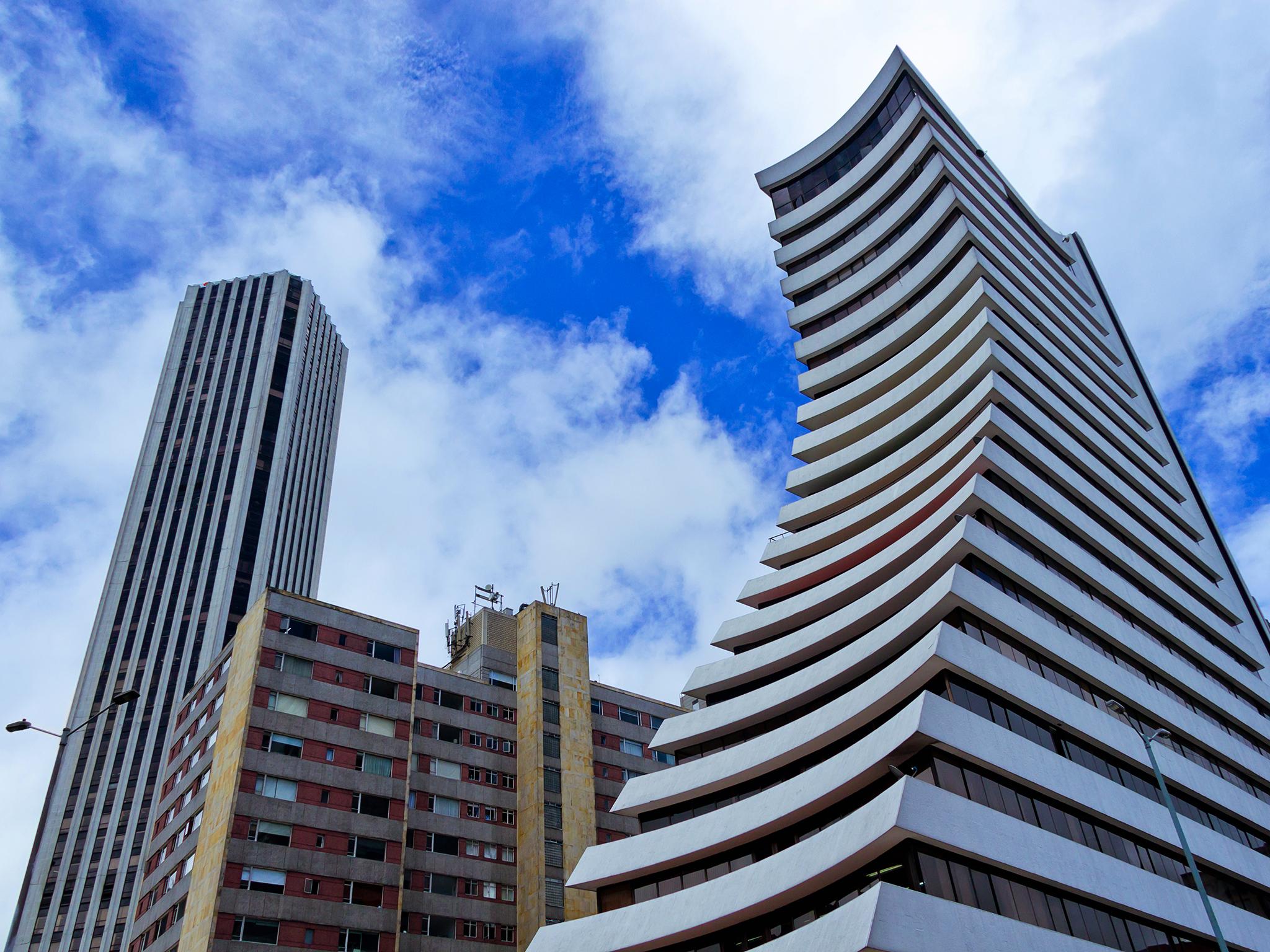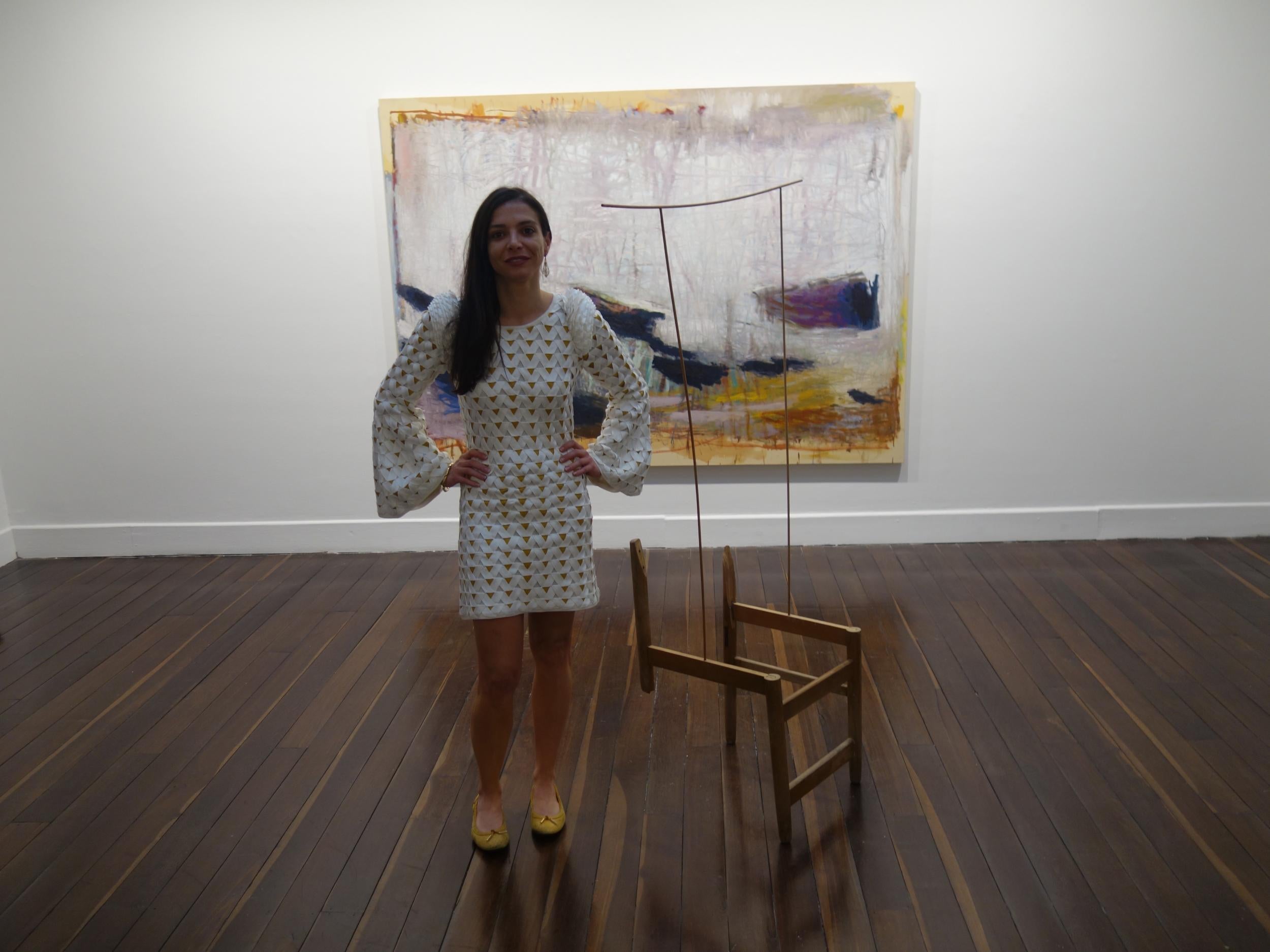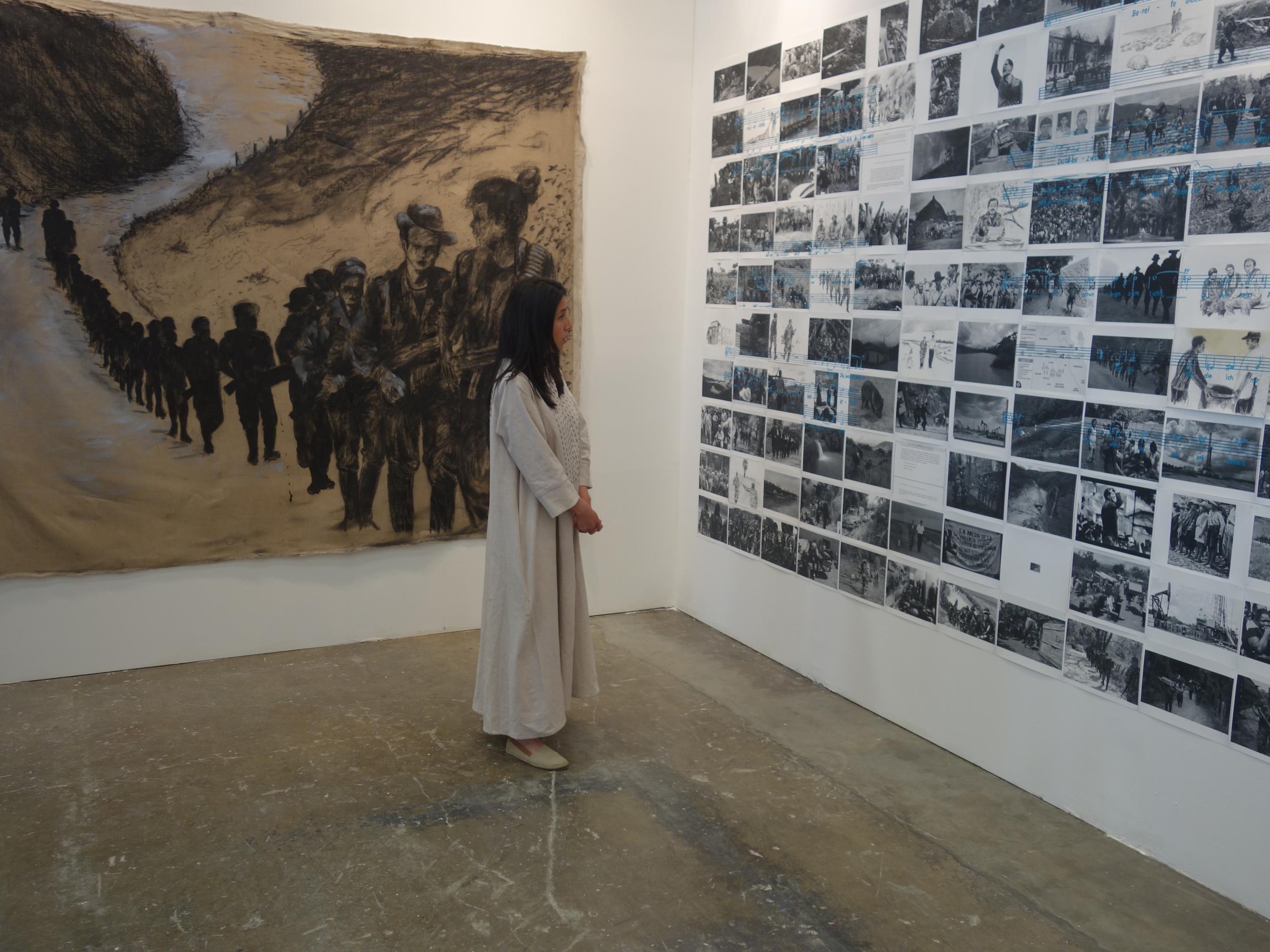ArtBo: The annual arts festival painting a brand new picture of Bogota
The South American city is finding resurgence in a thriving arts scene. Now in its 13th year, the ‘ArtBo’ has established itself as one of the most important art events in the world

Your support helps us to tell the story
From reproductive rights to climate change to Big Tech, The Independent is on the ground when the story is developing. Whether it's investigating the financials of Elon Musk's pro-Trump PAC or producing our latest documentary, 'The A Word', which shines a light on the American women fighting for reproductive rights, we know how important it is to parse out the facts from the messaging.
At such a critical moment in US history, we need reporters on the ground. Your donation allows us to keep sending journalists to speak to both sides of the story.
The Independent is trusted by Americans across the entire political spectrum. And unlike many other quality news outlets, we choose not to lock Americans out of our reporting and analysis with paywalls. We believe quality journalism should be available to everyone, paid for by those who can afford it.
Your support makes all the difference.San Felipe, in north Bogota, is a low-rise neighbourhood with dangling telephone wires and serious security grilles capping the two-storey homes. It’s slightly like the less well-heeled parts of Los Angeles. But on this October day, nosing their way along the cracked concrete pavements, are people who you’d recognise from Frieze London: international art nomads in black and asymmetrical garb, along with a smattering of art collectors in gallery-hopping mufti of chinos and trainers.
Maria Wills, standing outside the pistachio-coloured gallery Instituto de Vision, is receiving them with papaya cocktails and an excellent show of Colombian artists. Even in the few years since the gallery began in 2014, Wills has seen Bogota inch further along the track to international art destination.
“Since we opened the gallery, the art district has really consolidated,” she says. It’s now on the map of the new, improved Bogota, with around 14 galleries and a monthly open evening, featuring fearsome coffee, rum, and a nose round Flora Ars and Natur – a kind of ICA of Bogota.
Okay, but why is Bogota and its art scene different from any amount of global cities experiencing a bit of an uplift? Because Colombia and its capital have just emerged from the longest civil war in history, with a peace treaty signed last year that aims to close half of century’s fighting with guerrilla group, the Farc.
A decade or two ago murder, kidnappings and political violence were common in Bogota, and although Colombia has long had big-hitter artists – Miguel Angel Rojas and Doris Salcedo among them – its fierce reputation meant that few would have been foolhardy enough to flit from gallery to gallery.

While there’s a widespread scepticism about the peace process – and nor has hit Netflix crime drama Narcos exactly helped public perceptions – there’s a huge sense of optimism in the air that’s attracting international attention.
“I’m hopeful that things will change to the point where we can start talking about a post-war period,” says Wills, who thinks that art might help provide a “healing experience”. And a feeding frenzy. Paris’s Pompidou Centre in Paris, MoMA in New York and London’s Tate Modern all have eyes and ears in Bogota, which is currently considered a bit of a laboratory and a city to watch.
Around 20 years ago, you would hardly have seen a tourist in Bogota, a local tells me. Now, while the city won’t win any prizes for traffic management and sprawl, there’s a mood afoot that’s been likened to the fall of the Berlin Wall by Felipe Gonzalez, Spain’s former prime minister.
Crime has been bought down to a three-decade low. President Juan Manuel Santos won a Nobel Peace prize last year for his efforts in sorting the peace deal. The “hopey-changey” thing is alive in Bogota.
The annual ArtBo art fair, funded by the Bogota Chamber of Commerce, is the key moment in the calendar when curators, critics and collectors descend on the city to peer round an art-filled hanger, with offsite events like walks in San Felipe.

It all started 13 years ago, when Colombia’s city strategists set out, as ArtBo director Maria Paz Gaviria puts it, to “activate” the city, and to brand it as a place open to culture, business and inward investment.
Now, Bogota is not only attracting those collectors and gallerists from Europe and the US, but also other Latinos, including Venezuelans like artist Lucia Moron, who has been in Bogota for nine years.
“It started small, but it’s become quite a community here,” she says. “Bogota’s increasingly international,” adds Fernando Pradilla of the Galeria Fernando Pradilla, opened like so many in the last ten years. “There’s now about 80 galleries here – and it’s growing all the time.”
Much of the energy is with younger artists like Maria Clara of El Vitrinazo, a gallery that places art in bakeries, hostels and bars, and at ArtBo one encounters a more raw sensibility than many art fairs. For example, at one stand I saw a woman sing laments in front of old photographs of the Farc conflict, as part of a themed area called “Against Forgetting”.
As Maria Wills says, “For 60 years, many of our artists have been using different media to address our war and violence.” Art is a means to try and make sense of the strife.
Flamboyantly dressed in Colombian designer Pepa Pombo, ArtBo’s director Maria Paz Gaviria testifies to Bogota’s new “artistic energy”.
“The peace process has put rocket fuel in the tank. I’m against making a role for the arts, but the arts are a place for liberty and visibility. In Colombia we’ve all become much more visible – not just the fair.”

The galleries range from raw places in rough neighbourhoods to plush palaces with polished-concrete floors, like the 30-year-old La Cometa Gallery, and are concentrated in three main areas: San Felipe, Chapinero and Macarena – perhaps the most picturesque area, pushed up against the Eastern Hills, part of the Andes and Bogota’s topographical highlight.
Between these areas are red-brick tower blocks, bicycle paths, parks, seething highways and bizarrely, the occasional fake Tudor house, as if Surrey had landed on the equator. It’s a disjointed city, with many areas that are still sketchy. Even so, a result of the peace process is that everyone wants a piece of Colombia.
The Pope came recently, as did One Young World: the global forum for young leaders, addressed here by Bob Geldof. Bogota featured in the 2013 Phaidon Press book, Art Cities of the Future, and wealth is shakily growing: research firm WealthInsight reported that the number of millionaires in Colombia had grown by 39 per cent from 2007-2014.
There’s another factor in Bogota’s turnaround; it has become legendary as a city of urban innovation. Much of this is to do with the legendary example of Antanas Mockus, who became mayor in the bullet-proof vest days of 1995, and advocated a playful behaviourist approach to governing the city.
Mockus, who lives in Macarena and runs an influential Bogota-based urban company called Corpovisionaries, is fond of quoting philosophers like Pierre Bourdieu. He recalls his more head-line grabbing initiatives, such as training traffic police to learn mime, so they could ridicule drivers who ran red lights; giving drivers “thumbs-up” and “thumbs down” cards to use rather than road rage; and set up a “Night Without Men”, when men were invited to stay at home while women went out.
His water-saving initiative used the voice of Colombian pop star Shakira saying “Thank you for saving water”, and Mockus claims that it encouraged people to cut down on their usage. But his key win came when he invited the wealthy to voluntarily give an extra 10 per cent in taxes, which astonishingly, 63,000 households did – part of the reason why his philosophical ideas live on in Bogota. “People respond to humour and playfulness from politicians,” he says.
At the Abasto restaurant in Bogota’s Chapinero district, David Melo, marketing manager for Invest in Bogota, is rhapsodising about Colombian food. “We’re seeing lots of fusion restaurants,” he says, holding up a little bottle of fierce Amazonian spice called Wai Ya. This jungle-to-fork gastronomy is growing fast, he says, partly driven by social programmes that try and shift farmers away from cocaine production; for example, Abasto’s coffee was made in a conflict zone.

Bogota’s art-driven push has been complemented by other kinds of foreign investment, says Melo. “Industries are moving in: life sciences, health services and creative industries like HBO, Disney, Sony.” There’s a long-awaited new metro system due to start next year – although Bogota’s sceptics will believe it when they see it.
But Melo says that Bogota doesn’t want to forget the past. “We encourage visitors to talk about the peace process, partly because it shows how far we’ve moved on.” The calamity that was Pablo Escobar and his narco-baron ilk is now more of a problem for Mexico, sadly for that country, and Narcos is seen as a retro show, just as 1970s cop show Kojak would be to a New Yorker.
It would be blithe to suggest that problems don’t exist in Bogota and Colombia. This year saw the highest cocaine harvest for years. The Peace Agreement referendum last year – to ratify the peace deal and gauge how far the population supported the peace deal with Farc – saw the No camp win by a whisker, unwilling to make any capitulation to the guerrilla group (which has now re-ordered its acronym and become the “Common Alternative Revolutionary Force”).
The fallout has been a bit divisive, with family arguments breaking out. This is President Santos’ final year in office, and as the country’s top Yes voter he wants to leave the country remembered as the architect of a solid peace agreement, like South Africa and Northern Ireland.
But at a rooftop party for ArtBo, held in a shiny property development with rooftop Jaccuzis for Bogota’s new rich, few of these fears were on display as a local businessman, Jorge, pressed my hand and said: “Welcome to the new Bogota.” The old search for El Dorado – the mythical source of gold, so much part of Bogota’s history – has taken a new turn.
Subscribe to Independent Premium to bookmark this article
Want to bookmark your favourite articles and stories to read or reference later? Start your Independent Premium subscription today.
Join our commenting forum
Join thought-provoking conversations, follow other Independent readers and see their replies
Comments